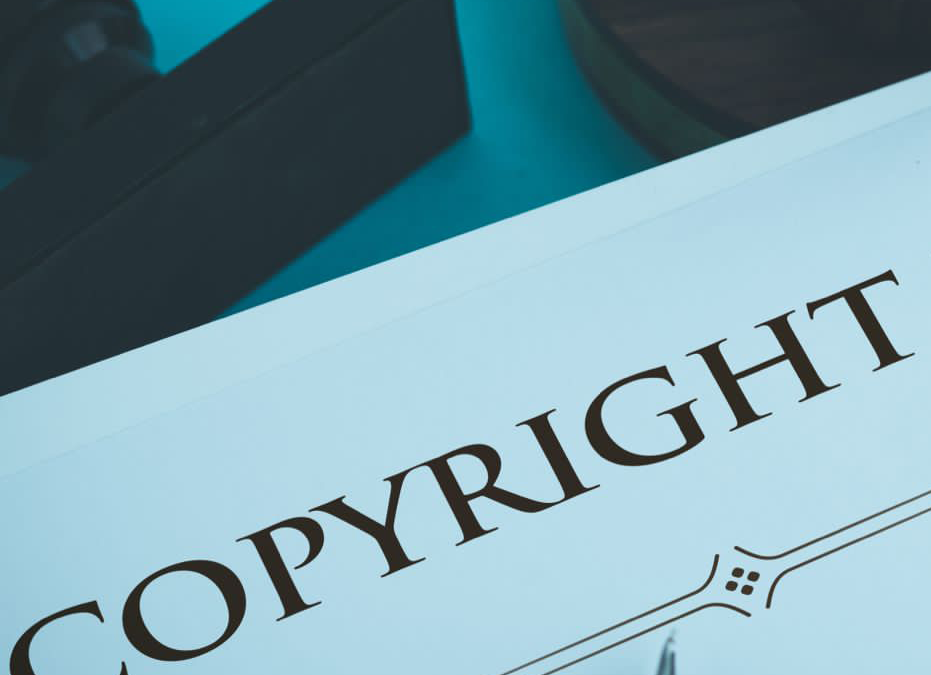Copyright is part of intellectual property rights. The object of copyright protection is an original work of human thought related to science, art and/or literature.
Not everyone is able to produce a work of thought that can be enjoyed by other humans. Those who enjoy such a n original work often get a sense of pleasure, satisfaction and comfort. Therefore, it is justified that the producer of that work deserves protection.
It is original works fixed in a tangible medium of expression that is subject to protection. Thus, original works in the form of ideas are not protected. Since copyright adheres to the declarative principle, announcements or publications are required.
Since an original work is tangible and declared or, published, it is subject to the protection in accordance to Law No. 28/2014 on Copyright. Based on article 40 of Law No. 28/2014, the tangible works include songs, books, films, paintings, photography, dances and others.
No registration process is required to get such an original work protected. Registration at the Directorate General of Intellectual Property is required to obtain proof of ownership of rights, but not for the issuance of rights and protection.
Neighboring Rights
In addition to the object of protection stipulated in Article 40 of Law No. 28 /2014, there are other rights that are protected, namely neighboring rights. Article 1 Paragraph 5) of Law No. 28 /2014 defines neighboring rights are rights related to copyright which are exclusive rights for performers, phonogram producers, or broadcasting institutions.
Neighboring rights are exclusive rights which include:
- moral rights of performers
- economic rights of performers
- economic rights of phonogram producers
- economic rights of broadcasting agency
Neighboring rights exist due to a copyrighted work produced by a creator. Based on Law No. 28/2014, the copyright holders of the related rights are performers, phonogram producer and broadcasting institution.
Performer
Performer refers to a person or persons who individually or collectively display and perform a work. Performers have moral rights and economic rights.
Moral rights recognizes the name of the performer and does not distort his or her original work or modify the creation. The economic rights of performers include the right to carry out their own performances, give permission, or prohibit other parties from broadcasting, fixating performances in any form, reproducing, distributing of fixations of performances and their copies, renting out, and fixating original works that can be accessed by the public. [1]
Phogram producer
A phonogram producer is a person or legal entity that records for the first time and has the responsibility to engage in sound recording, both performance recording and other sound or sound recordings.
The economic rights of phonogram producers include the right to do the work themselves, give authotization, or prohibit other parties from: copying the phonogram, distributing the original or copy phonogram, renting to the public copies of the phonogram, providing publicly accessible phonograms with or without cables.
Broadcasting Institution
Broadcasting institutions posses economic rights. The economic rights are in the form of self-production, granting authorization, or prohibiting other parties from performing: re-broadcast, broadcast communications, broadcast fixation and or broadcast fixation duplication.
These parties have neighboring rights as stipulated in Law No. 28/2014.
For example, a live concert are protected by copyrights and neighboring rights.
The songs sung are entitled to royalties on copyright. If there are parties who stream the live concert, then the parties appear at the concert are entitled to royalties for their appearance. Singers, back singers and dancers are eligible to get royalties.
In a film, neighboring rights that arise include, among others, the main character and the supporting actor playing the characters in the film. Film producers include the owners of related rights. Reproduction of the film, whether in full or in part, must be completed with authorization.
The copyright holder for the neighboring rights has the same rights as the creator and/or the rights holder, namely moral rights and economic rights.
Moral Rights and Economic Rights
Moral rights refers to the unified rights of the creator and his or her copyrighted work.
Economic rights refers to rights for creators and/or rights holders to obtain economic benefits from their original work. There is time period of economic rights protection.
The neighboring rights specifically stipulated in Article 63 of Law No. 28/2014 are:
- Protection of economic rights for:
a. Performers that are valid for 50 years since their performances are fixed in phonograms or audiovisuals;
b. Phonogram Producer that are valid for 50 years since the phonogram is fixed;
c. Broadcasting Institution that are valid for 20 years since the broadcast work was first broadcasted. - The validity period of the protection of economic rights as referred to in paragraph (1) is effective as of January 1 of the following year.
If the period of protection of the economic rights on the copyrighted work has expired, then the copyrighted work will become public domain, suggesting that anyone may use the rights without permission or paying royalties.
Copyright and industrial property rights exist following a process that comes from certain human thoughts. Therefore, it is very natural that intellectual property rights protection is exclusive to the owner.
However, there are some results of human thoughts that are very important for human life but cannot get protection as an exclusive right. This exclusive protection has a time period in accordance to the applicable laws and regulations.
Author / Contributor:
 |
Rakhmita Desmayanti S.H., M.H
Partner Contact: Mail : rakhmita@siplawfirm.id Phone : +62-21 799 7973 / +62-21 799 7975 |
Referensi:
[1] Cita Citrawinda Noerhadi, Hak Kekayaan Intelektual Dan Perkembangannya, 1st ed. (Jakarta: Buku Kompas, 2021).
